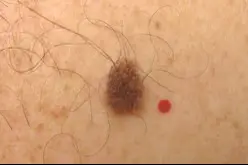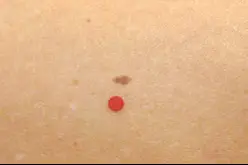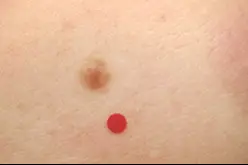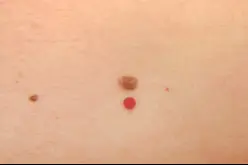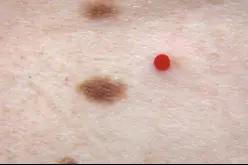Benign Mole
Moles are benign (noncancerous) growths of the skin caused by the proliferation of melanocytes, which produce the dark protective pigment in the skin called melanin. Most moles appear in individuals during their 20s, though some may appear later in life and some may be present at birth. The number of moles peak in individuals during their 30s and have a tendency to decrease in number thereafter. Factors that determine the number of moles include familial or genetic predisposition and sun and ultraviolet light exposure.


